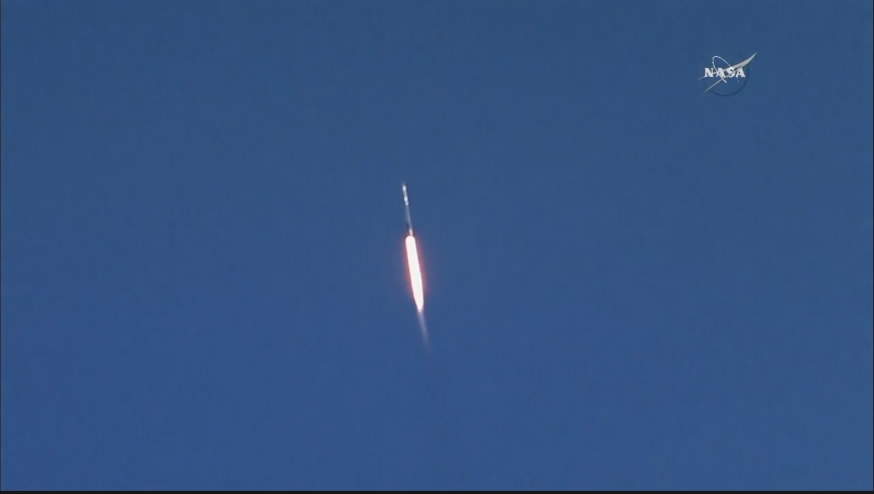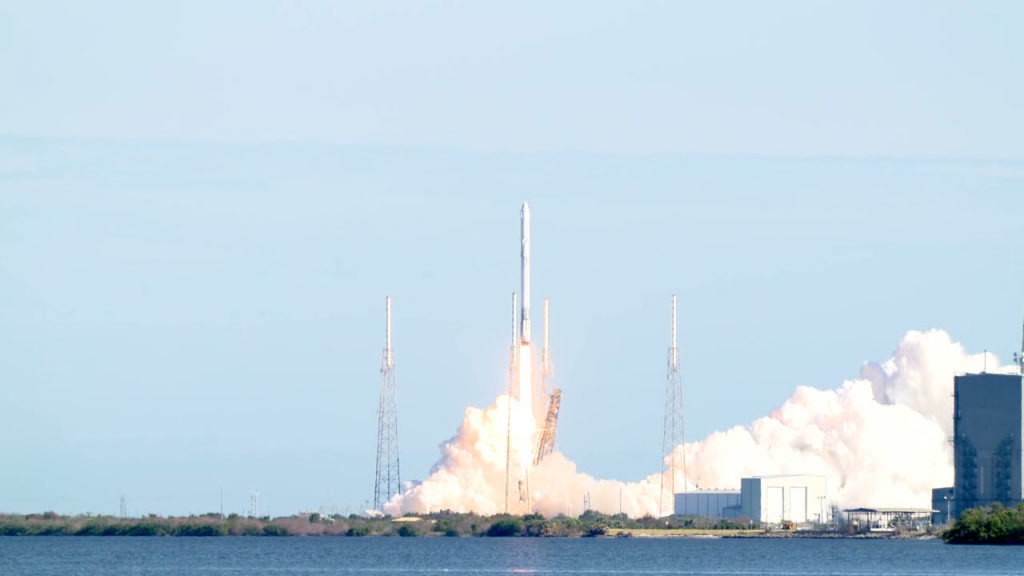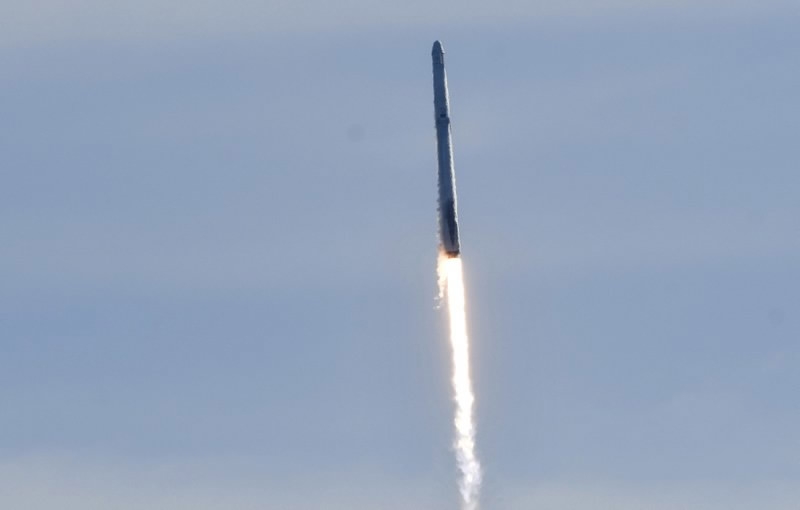
space
10:34, 16-Dec-2017
In a first, SpaceX launches recycled rocket and spacecraft
By CGTN America and AP

SpaceX launched a recycled rocket with a recycled capsule on Friday – marking the unmanned Falcon 9 rocket’s delivery to the International Space Station, taking flight again after a six-month turnaround. On board was a Dragon supply ship, also a second-time flier.
It was NASA’s first use of a reused Falcon 9 rocket and only the second of a previously flown Dragon.
Within 10 minutes of liftoff, the pre-flown booster was back at Cape Canaveral Air Force Station, standing upright in SpaceX’s landing zone. That’s where the Falcon 9 landed back in June following its first launch. Double sonic booms thundered across the area.
The Dragon, meanwhile, was in orbit and on track to reach the space station Sunday. The capsule last visited the 250-mile-high outpost in 2015.

A SpaceX Falcon 9 rocket with the Dragon spacecraft launched December 15 at 10:36 a.m. EST from Space Launch Complex 40 at Cape Canaveral Air Force Station in Florida. /NASA Photo
A SpaceX Falcon 9 rocket with the Dragon spacecraft launched December 15 at 10:36 a.m. EST from Space Launch Complex 40 at Cape Canaveral Air Force Station in Florida. /NASA Photo
This time, the Dragon is hauling nearly 5,000 pounds of goods, including 40 mice for a muscle-wasting study, a first-of-its-kind impact sensor for measuring space debris as minuscule as a grain of sand, and barley seeds for a germination experiment by Budweiser, already angling to serve the first beer on Mars.
Reusability is the future for spaceflight, according to NASA’s station program manager Kirk Shireman. Everyone benefits through lower launch costs, he noted.
“The reality is, the business of space is dominated by launch costs … so getting the costs down is important for everyone,” he told reporters earlier this week.

The first stage of the SpaceX Falcon 9 rocket making its landing at Cape Canaveral, Florida. SpaceX has now managed to return 20 of its rocket boosters after launch. /NASA Photo
The first stage of the SpaceX Falcon 9 rocket making its landing at Cape Canaveral, Florida. SpaceX has now managed to return 20 of its rocket boosters after launch. /NASA Photo
For the past two years, the private SpaceX has been salvaging as much as possible from rockets following liftoff. Rather than letting first-stage boosters sink in the Atlantic, as other orbital rocket makers do, SpaceX flies them back to land for vertical touchdowns or, when extra rocket power is needed to propel a satellite extra high, to a floating ocean platform.
NASA flew its first reused Dragon back in June. But managers waited until SpaceX had three rocket reflights under its belt, before putting NASA’s station equipment and experiments on the secondhand Falcon 9.
The space agency assigned its best engineers to take part in the extensive booster inspections and reviews before launch, according to Shireman. The risk of flying a reused rocket, versus a brand new one, was judged to be pretty much equal, he said.

A SpaceX Falcon 9 rocket lifts off from newly refurbished Pad 40 at Cape Canaveral Air Force Station, in Cape Canaveral, Florida, Friday, December 15, 2017. /NASA Photo
A SpaceX Falcon 9 rocket lifts off from newly refurbished Pad 40 at Cape Canaveral Air Force Station, in Cape Canaveral, Florida, Friday, December 15, 2017. /NASA Photo
SpaceX is one of two private aerospace companies carrying supplies to the space station for NASA. SpaceX chief Elon Musk watched the launch alongside his flight controllers in Hawthorne, California.
This was the first launch from the SpaceX-rented Complex 40 in more than a year. The last time a Falcon rocket stood at the pad ready to fly, in September 2016, it blew up during a fueling drill. SpaceX spent 50 million US dollars rebuilding the pad.
12216km
Source(s): AP

SITEMAP
Copyright © 2018 CGTN. Beijing ICP prepared NO.16065310-3
Copyright © 2018 CGTN. Beijing ICP prepared NO.16065310-3